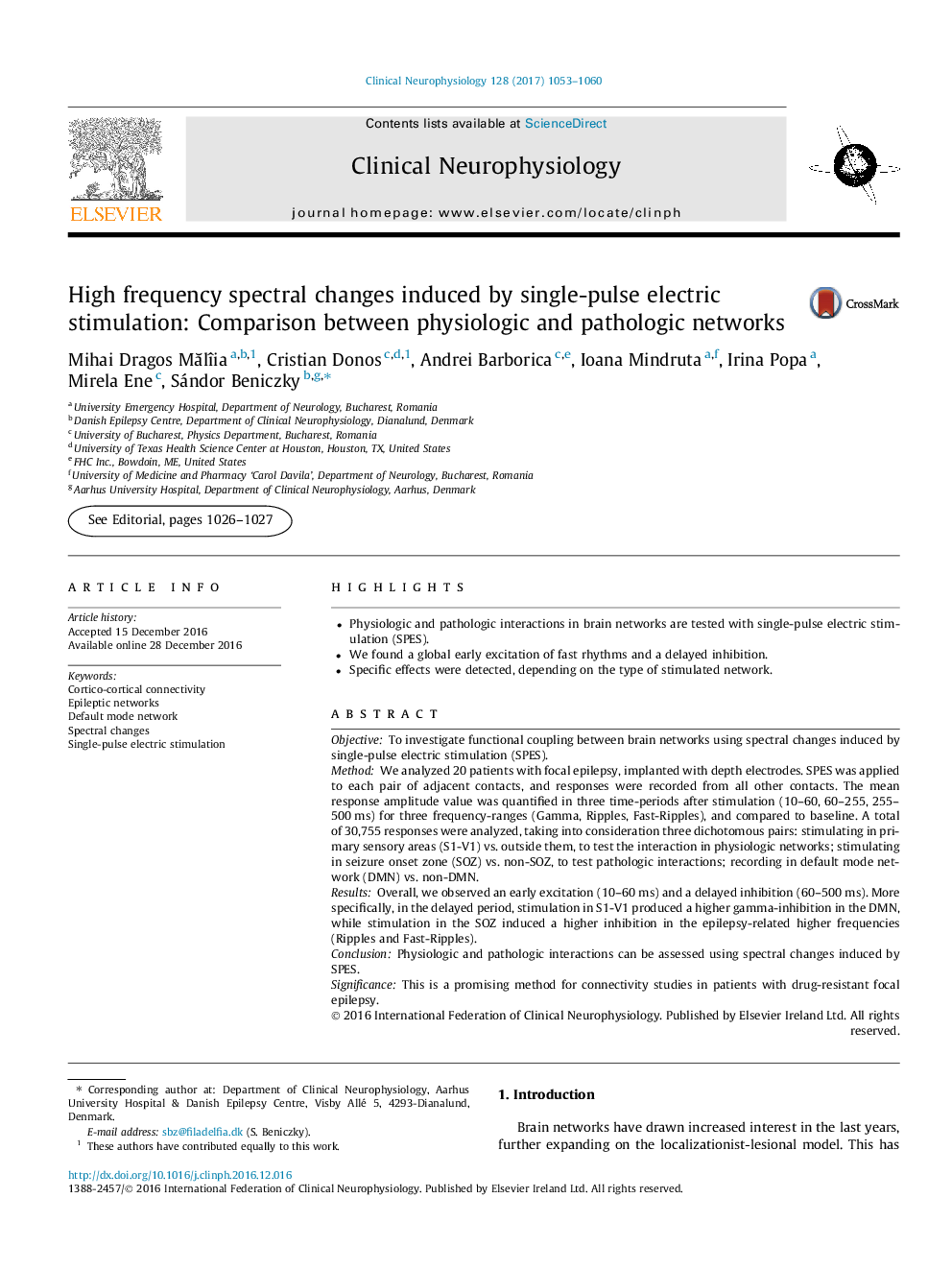| Article ID | Journal | Published Year | Pages | File Type |
|---|---|---|---|---|
| 5627907 | Clinical Neurophysiology | 2017 | 8 Pages |
â¢Physiologic and pathologic interactions in brain networks are tested with single-pulse electric stimulation (SPES).â¢We found a global early excitation of fast rhythms and a delayed inhibition.â¢Specific effects were detected, depending on the type of stimulated network.
ObjectiveTo investigate functional coupling between brain networks using spectral changes induced by single-pulse electric stimulation (SPES).MethodWe analyzed 20 patients with focal epilepsy, implanted with depth electrodes. SPES was applied to each pair of adjacent contacts, and responses were recorded from all other contacts. The mean response amplitude value was quantified in three time-periods after stimulation (10-60, 60-255, 255-500Â ms) for three frequency-ranges (Gamma, Ripples, Fast-Ripples), and compared to baseline. A total of 30,755 responses were analyzed, taking into consideration three dichotomous pairs: stimulating in primary sensory areas (S1-V1) vs. outside them, to test the interaction in physiologic networks; stimulating in seizure onset zone (SOZ) vs. non-SOZ, to test pathologic interactions; recording in default mode network (DMN) vs. non-DMN.ResultsOverall, we observed an early excitation (10-60Â ms) and a delayed inhibition (60-500Â ms). More specifically, in the delayed period, stimulation in S1-V1 produced a higher gamma-inhibition in the DMN, while stimulation in the SOZ induced a higher inhibition in the epilepsy-related higher frequencies (Ripples and Fast-Ripples).ConclusionPhysiologic and pathologic interactions can be assessed using spectral changes induced by SPES.SignificanceThis is a promising method for connectivity studies in patients with drug-resistant focal epilepsy.
